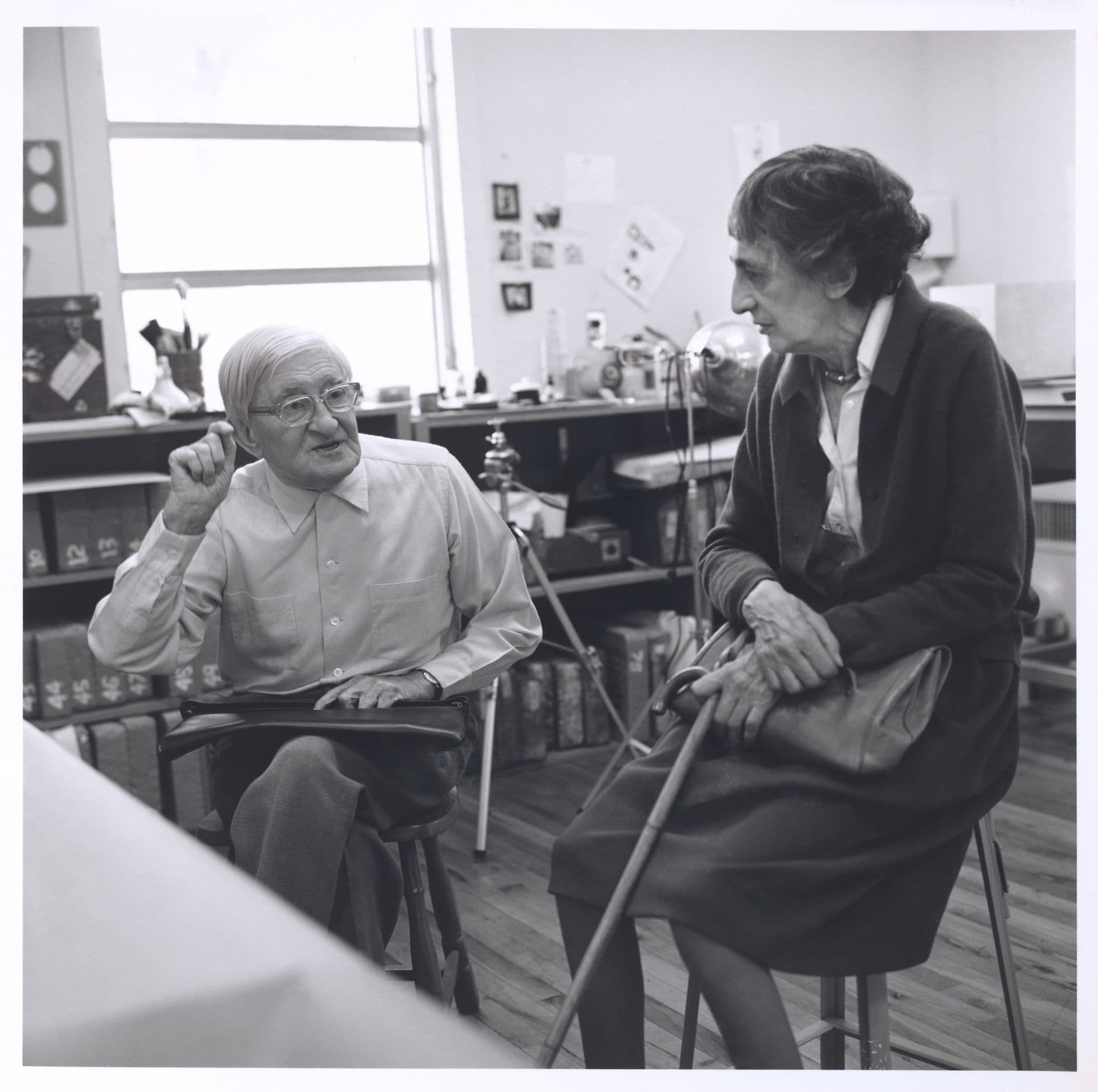The artistic journey of celebrated modernists Anni and Josef Albers commenced in the years following the First World War, when each artist enrolled at the Bauhaus school in Germany. Both were searching for an artistic training that looked beyond the restrictions of traditional art academies. Working alongside peers with similarly avant-garde ambitions, the pair contributed to a highly collaborative and experimental approach to art making, which, as Josef noted, preferred ‘to watch new, living masters who were determined not to follow in the footsteps of others.’ As both artists and teachers, Anni and Josef championed new ideas on the perception of colour, the organisation of form and the integration of art into life.
While each artist sustained their own unique practice, they both shared a commitment to the early modernist idea that art should no longer be concerned purely with representation. They stated that their art existed ‘to open eyes’ and insisted that art should be experiential and affecting, creating abstract works with a simple, powerful beauty.
Anni Albers worked across weaving, design, printmaking and education. She is best known for her weaving and textile practice, where she paved a new direction for the medium. She simultaneously embraced the functional role of textiles, while also pushing the medium into the realm of high art. She is remembered for creating weavings that could exist on the same level as painting, although it took some time for this to be accepted. Anni was the first textile artist to hold a solo exhibition at the Museum of Modern Art in New York in 1949 and published a number of seminal texts on textiles and design throughout her career.
Josef Albers is best known for his series of paintings made between 1949 and 1976 titled Homage to the Square. Working across sculpture, painting, design, and education, his seminal book Interaction of color published in 1968 brought together decades of his work around the perception of colour and experimental education into a pioneering theory that highlighted the relativity of colour. This theory would have an enormous impact on modern and contemporary art.
The couple met at the Bauhaus school in Weimar, Germany in 1922 and their romance was almost instantaneous. They married in 1925 and emigrated to the United States in 1933 to escape the rise of the Nazi Party. Anni and Josef started their journey in America at the newly established Black Mountain College in North Carolina, later moving to Connecticut when Josef was appointed Head of Design at Yale University.
The mode of working at the Bauhaus instilled in the artists the perfect complementary spirit to the young and ambitious master printer Kenneth Tyler, who they came to work with in Los Angeles in 1963. An innovator himself, Tyler was looking to revive and reinvent the print medium. He was inspired by the exacting methods that were required to translate Anni and Josef’s ideas around colour and form into works that vibrated with life and energy, and this encounter initiated a strong and fruitful working relationship. The mechanics of Tyler’s technologically advanced workshops stirred within the artists’ their long-held adoration for marrying art and industry and they found in Tyler a collaborator who was as enthusiastic about exploiting technical advancements as they were.



